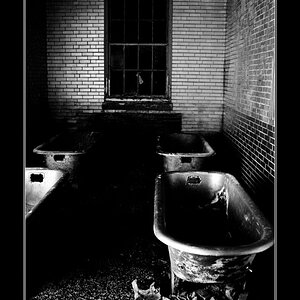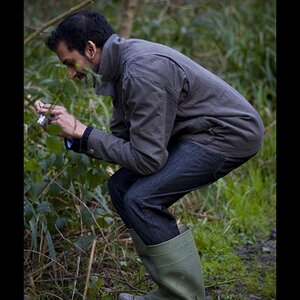darin3200
TPF Noob!
- Joined
- May 3, 2005
- Messages
- 2,078
- Reaction score
- 28
- Location
- Des Moines, Iowa
- Website
- friedrichsphotography.com
"Blooper - A place to post those pictures that just didn't go right"
Yeah, all 24 of them. I recently read a very misguided tutorial that said I should leave Kodak T-Max 400 in fixer for 5 minutes, at least. I do about 5 minutes and 30 seconds, wash the negatives, and turn the light on. The entire roll of film was wiped clear and all that remained was a purple tint. Not too happy about this, but I guess that counts as a blooper. :er:
Yeah, all 24 of them. I recently read a very misguided tutorial that said I should leave Kodak T-Max 400 in fixer for 5 minutes, at least. I do about 5 minutes and 30 seconds, wash the negatives, and turn the light on. The entire roll of film was wiped clear and all that remained was a purple tint. Not too happy about this, but I guess that counts as a blooper. :er:





 I picked up a Paterson tank and plastic reels that same day, and have had no problems.
I picked up a Paterson tank and plastic reels that same day, and have had no problems. 

![[No title]](/data/xfmg/thumbnail/42/42397-30faa170de7ed9be38adf00b9b26a220.jpg?1619740167)


![[No title]](/data/xfmg/thumbnail/36/36651-948fc64542c147745d3f3c48bce31dce.jpg?1619737673)




